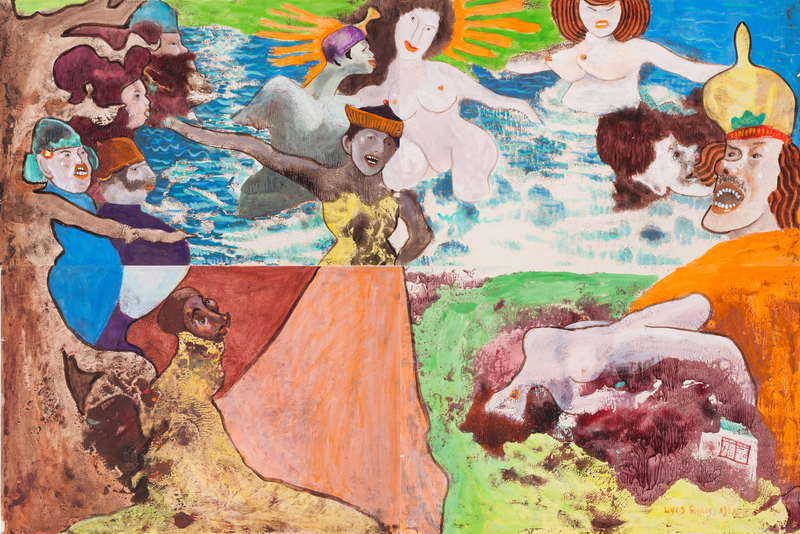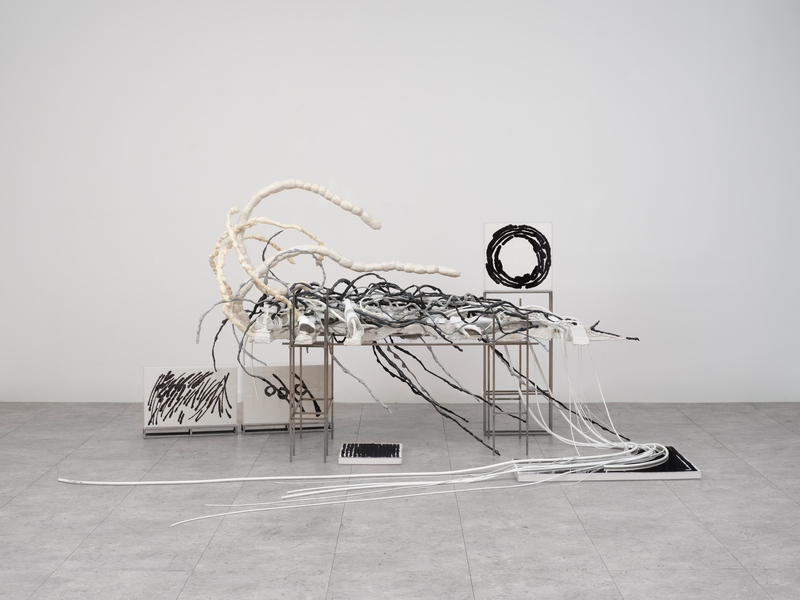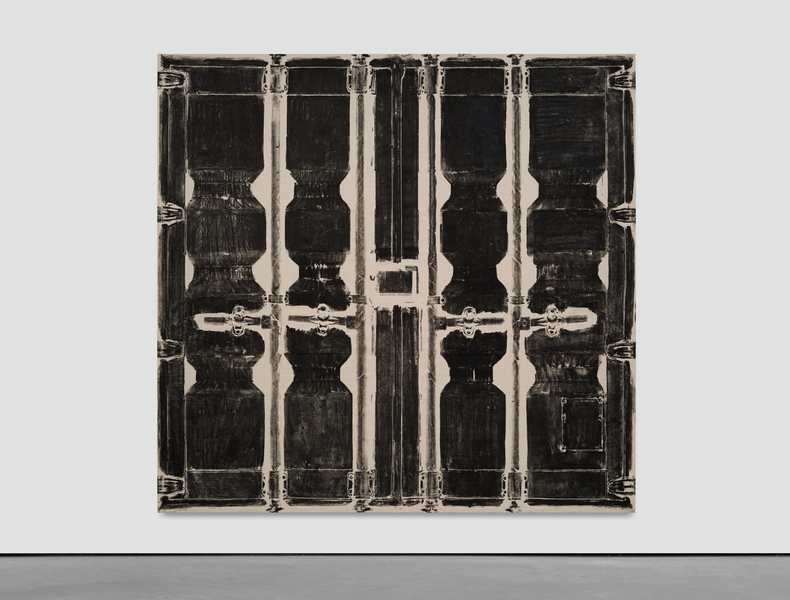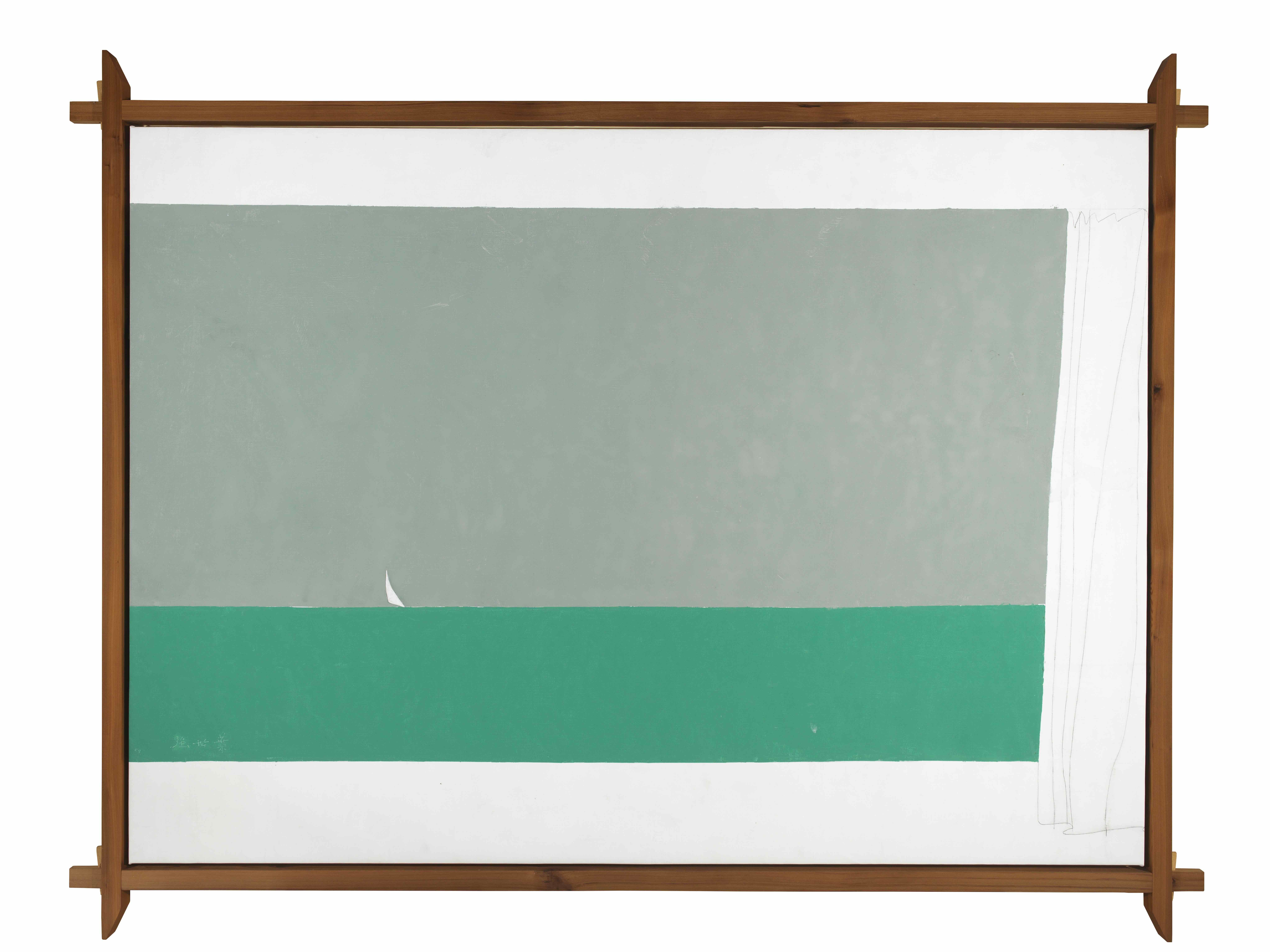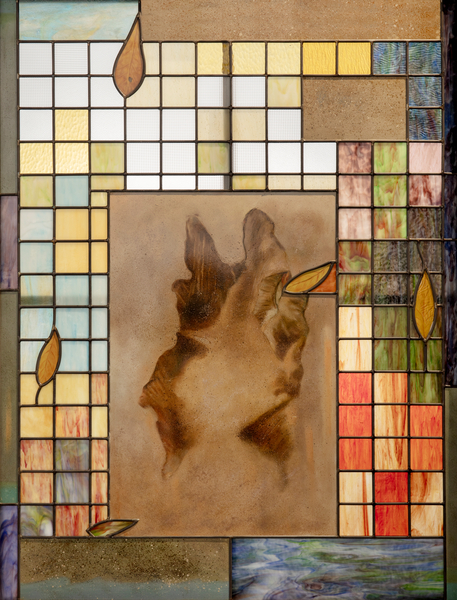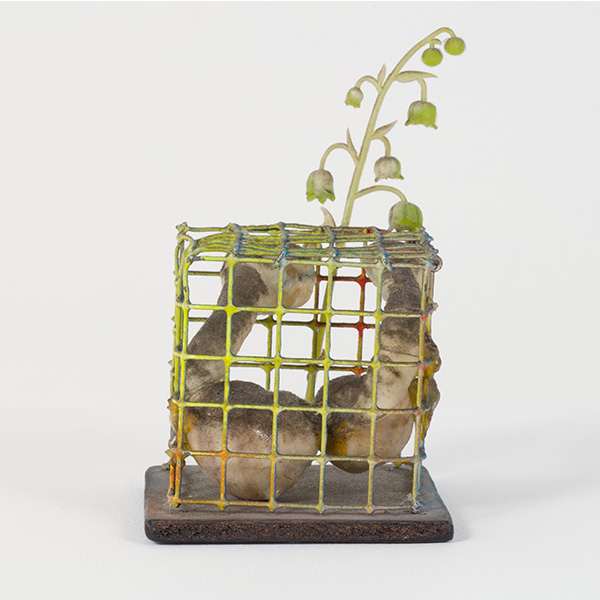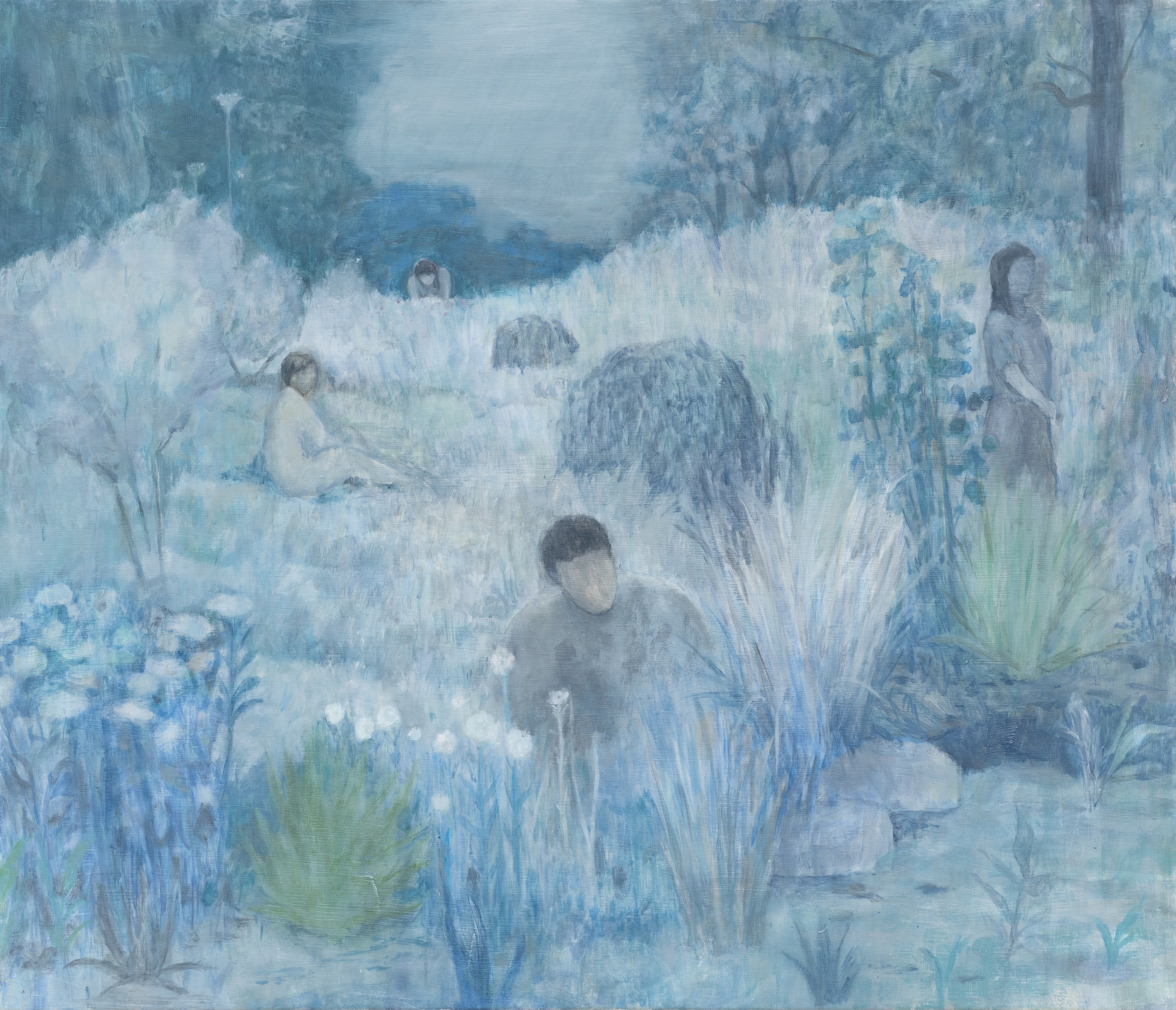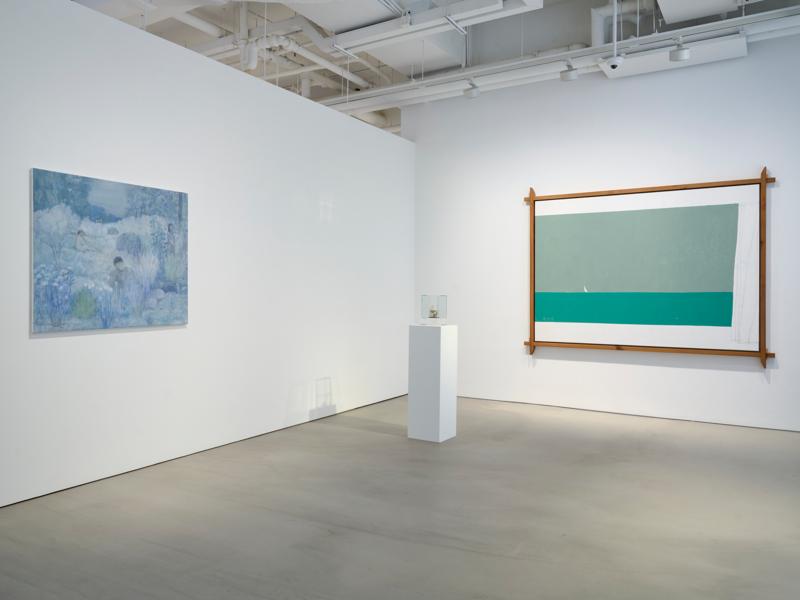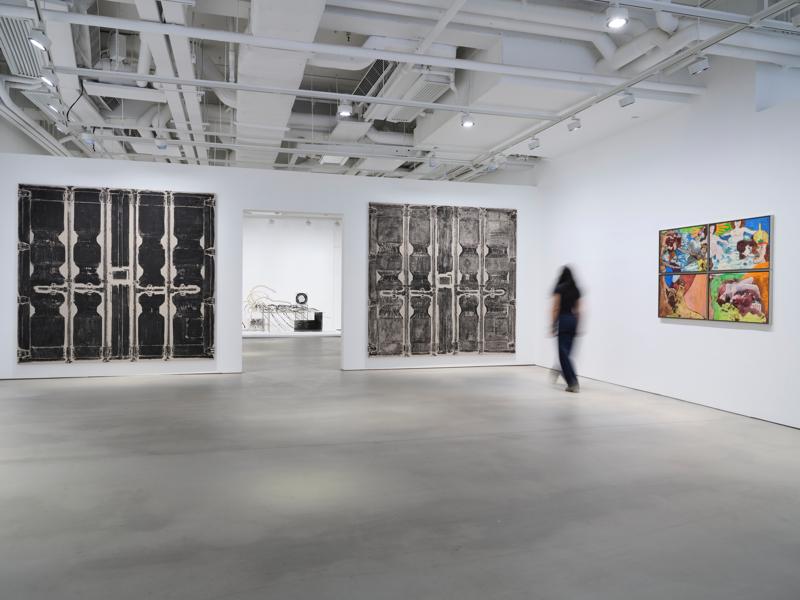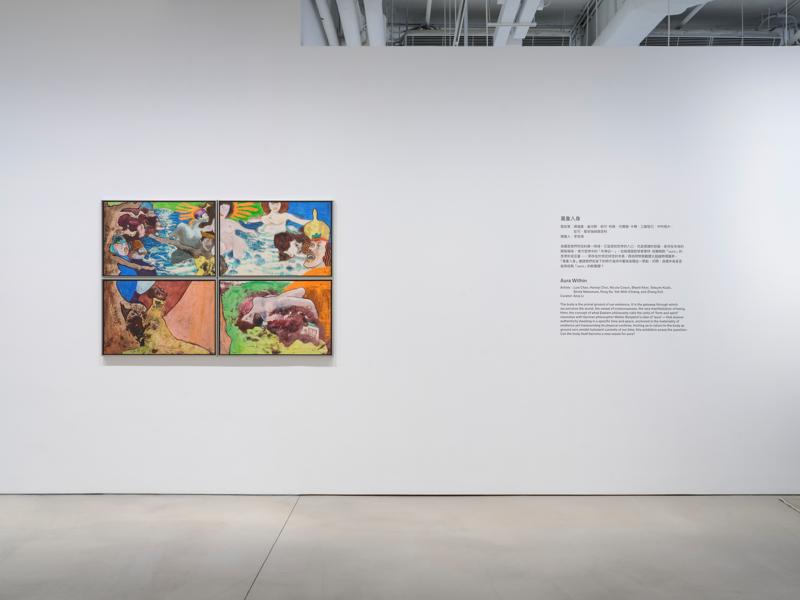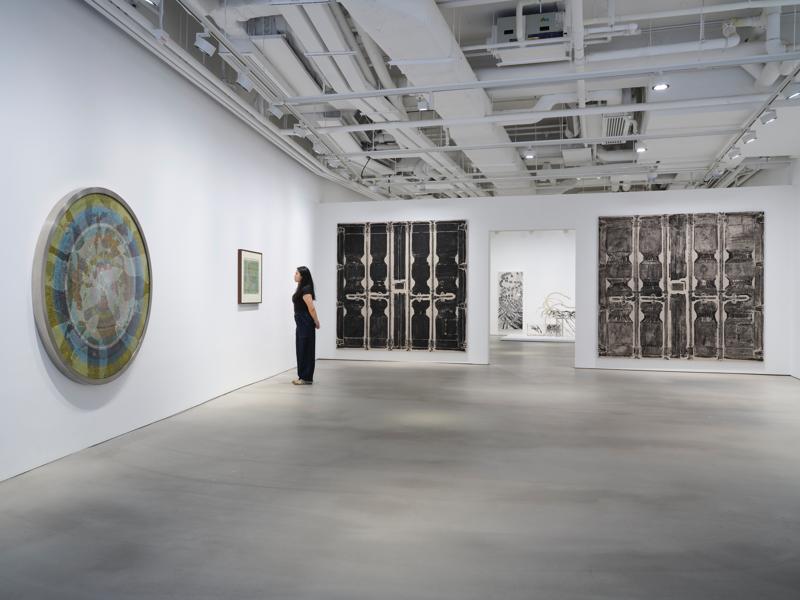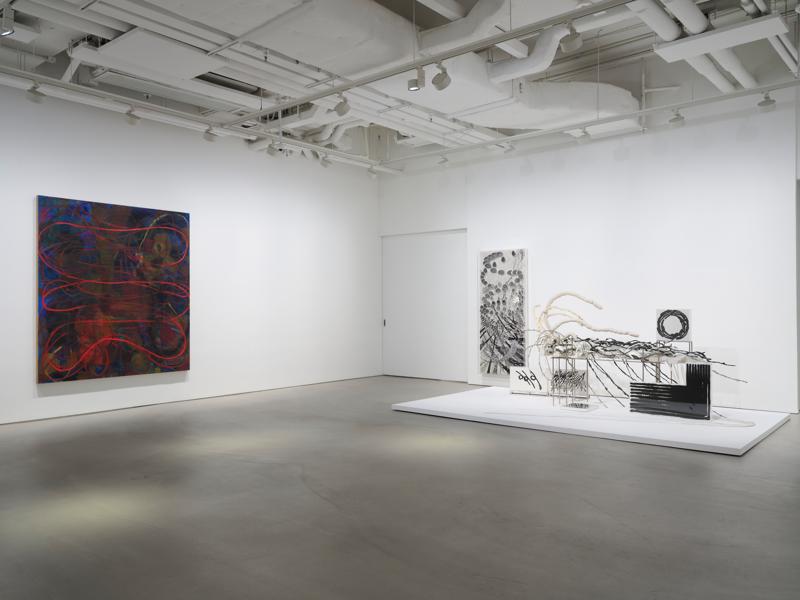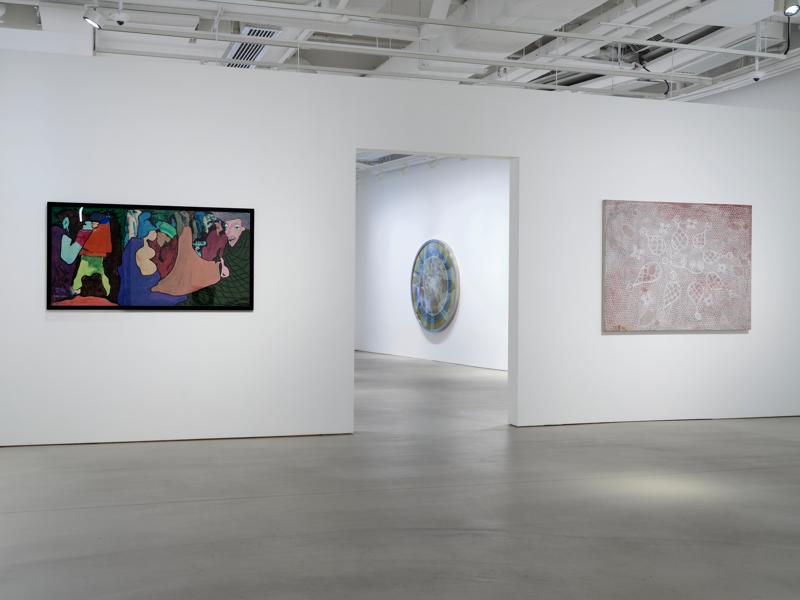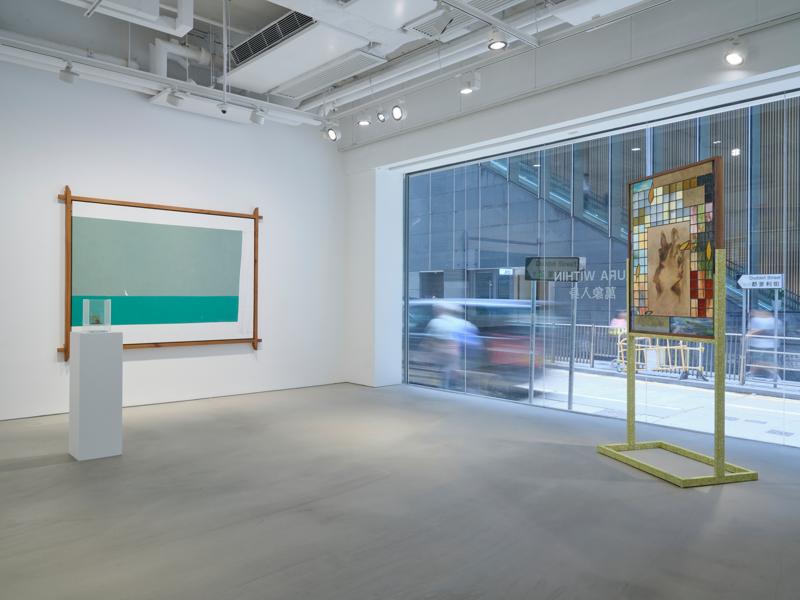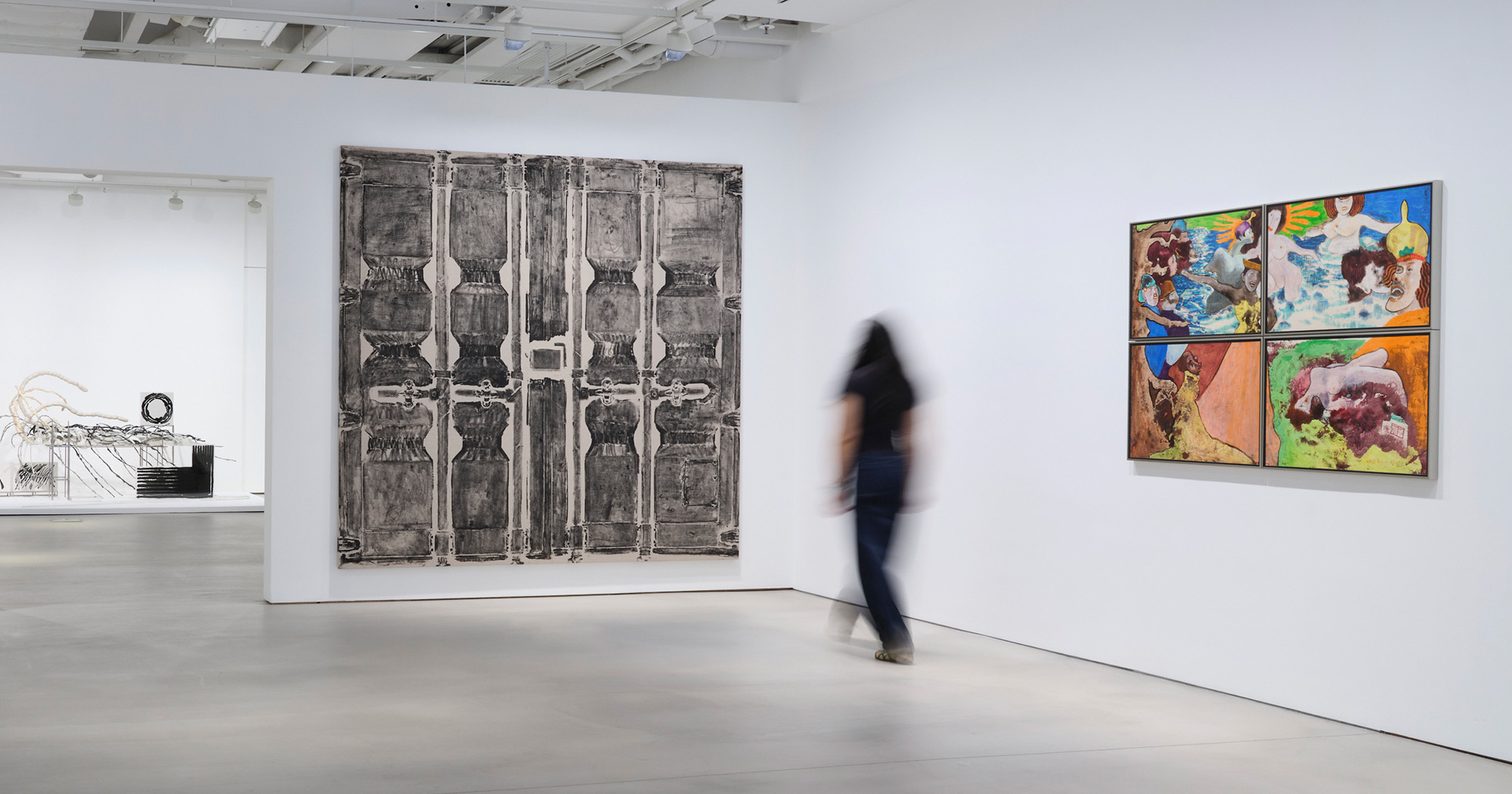
Aura Within
10 July – 30 August 2025
Hong Kong
Hauser & Wirth Hong Kong presents a group show featuring artists profoundly engaged with the cultural tapestry of Asia and its diasporic narratives, including Luis Chan, Haneyl Choi, Nicole Coson, Shota Nakamura, Peng Ke, Yeh Shih-Chiang and Hauser & Wirth artists Bharti Kher, Tetsumi Kudo and Zhang Enli.
‘Aura Within’ is organized by Hong Kong-based curator and scholar Anqi Li and is presented in collaboration with Clearing, Hanart TZ Gallery, Make Room, P21 and Silverlens. The exhibition invites the audience to return to the body as ground zero in the turbulent currents of our time and to explore urgent contemporary topics of existence and perception, identity and memory, and the interplay between nature, urban landscape and spiritual dwelling.
London-based Filipino artist Nicole Coson makes her debut in Hong Kong with two large-scale oil paintings ‘Double Doors I’ (2025) and ‘Double Doors II’ (2025), created for this exhibition. Coson employs her body to activate the canvas, translating shipping container doors that symbolize globalization and the ties between Hong Kong and Manila—her homeland—into heavy, resonant traces. In Berlin-based artist Shota Nakamura’s new painting ‘Untitled (garden)’ (2025), he draws on art history, personal memory and popular culture to portray figures in states of rest, meditation, or quiet detachment, delicately intertwined with their surrounding environments to evoke emotional depth and a sense of introspection. South Korean artist Haneyl Choi’s ‘Landscape of Abuse’ (2025) and ‘Play: Rhythm of Abuse’ (2023) are exemplary works of his ‘trauma-scapes.’ Through the juxtaposition of fragile organic forms and cold industrial matter, these works reveal a paradoxical symbiosis in which struggle and resistance, confinement and sanctuary, pain and repair coexist. Based between Shanghai and Los Angeles, Chinese artist Peng Ke extends her photographer’s gaze in ‘Begin Again’ (2024), transforming mundane urban fragments—such as a bare tree stump or autumn leaves lodged in concrete cracks—into luminous stained-glass panels, sanctifying a trembling tenderness beneath the city’s seemingly rational order.
The exhibition also highlights established names, including the late Hong Kong artist Luis Chan and late Taiwanese artist Yeh Shih-Chiang. In ‘Untitled (Legend of Goddesses of the Sea)’ (1968), Luis Chan, inspired by monotype printmaking, allowed accidental splashes of ink to evolve into whimsical figures he might have drawn from people he saw on television or observed in Hong Kong’s everchanging society. In ‘Green Sea and White Sail Framed in a Window’ (2007), created during Yeh Shih-Chiang’s later years in rural seclusion, the lone white sail drifting across the water is not a mere scenic depiction but a reflection of the artist’s grounded inner self.
Installation Views
1 / 8
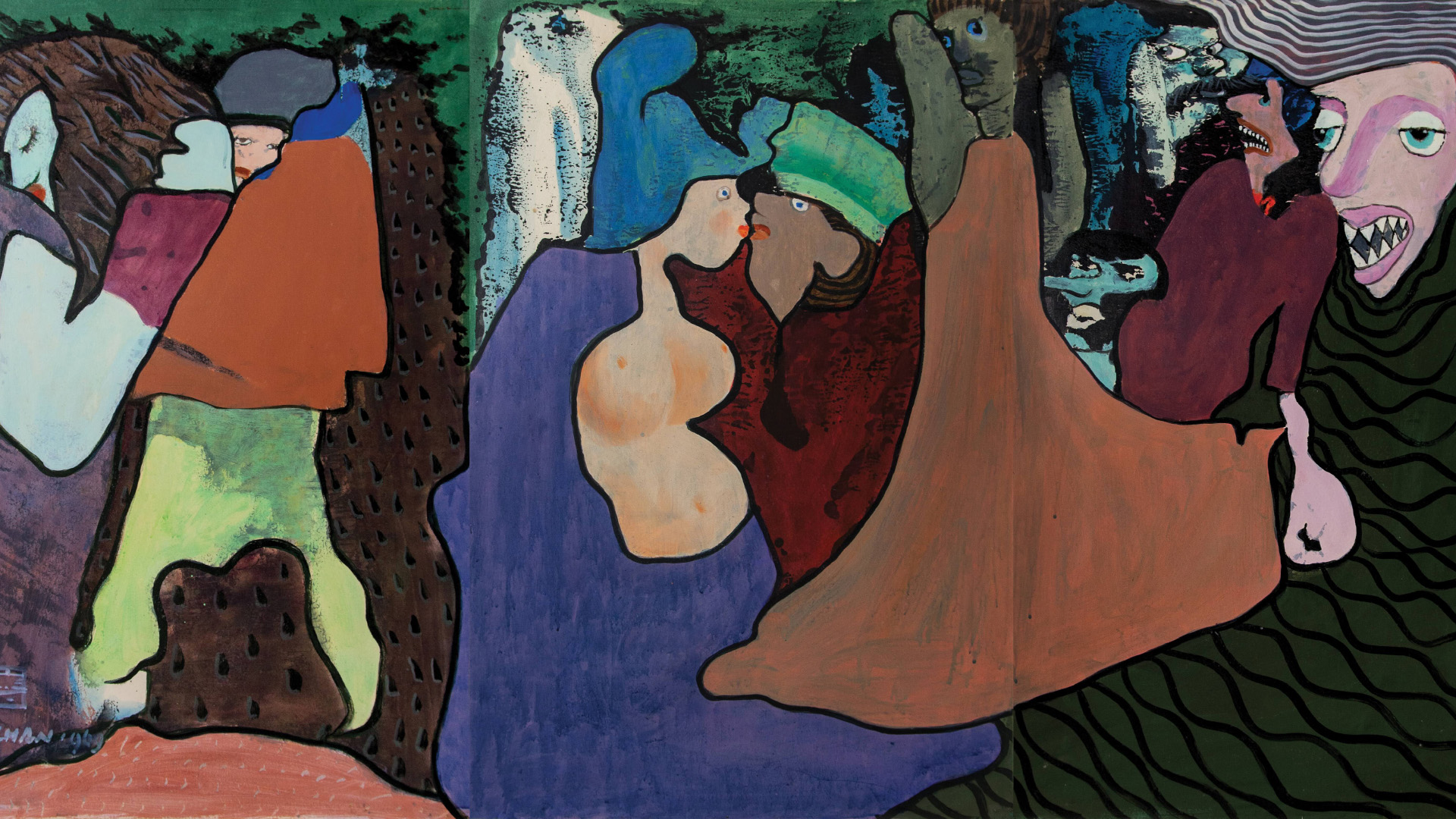
What the Body Knows
For Ursula, Anqi Li interviewed the artists and gallerists from our exhibition on how they explore aura through movement, matter and memory.

About the artist
Luis Chan
Luis Chan (1905 – 1995) was a largely self-taught Hong Kong artist who bridged traditional and modern practices. Known in the 1930s to 1950s as the ‘King of Watercolour’ for his lively English landscape style, he later embraced a dramatic shift. By the late 1960s, his paintings evolved into vibrant dreamscapes that portrayed the subconscious life of the city and the inner psyche of the post-war generation. Chan also played a key role in shaping Hong Kong’s modern art scene in his capacity as a writer and critic From his first solo exhibition in 1933 to his final one in 1993, he mounted 47 solo shows and published numerous essays on contemporary art. Born in Panama in 1905 to Cantonese parents, Chan moved to Hong Kong in 1910, where he lived and worked until his death in 1995.
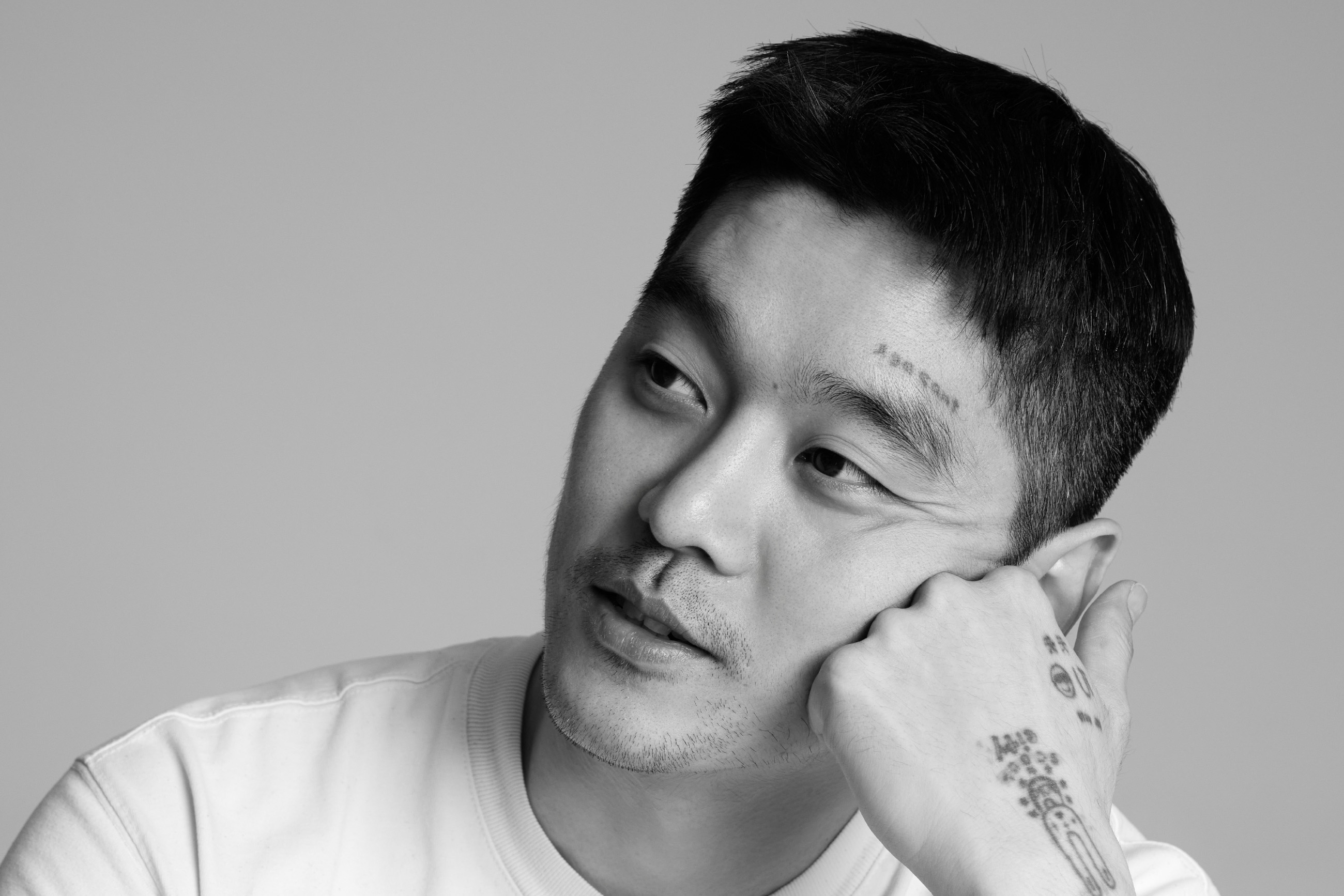
About the artist
Haneyl Choi
Haneyl Choi blends sculpture and queerness, adapting their form and content to specific contexts. His practice explores intersections of body, emotion and social structures, focusing on queer identity and human experience. Responding to an increasingly immaterial society, Choi developed the Physicality series, emphasizing the presence of the body and tactile sensations through rough, spontaneous recombination of body parts in sculpture. His Uncle series uses ‘uncle’ as a metaphor for marginalized figures in Korean society, expressing alienation and disquiet. The anonymous assemblages of fragmented body parts propose new imaginings of the human form and solidarity beyond resemblance. Choi was born in 1991 in Seoul, where he lives and works.

About the artist
Nicole Coson
Nicole Coson works in printmaking, video, and sculpture, exploring the process of image-making as it pertains to personal memory, history, and material culture. Coson’s printed canvases oscillate delicately between surface and depth; by integrating symbolically-loaded found objects into the etching press, the concrete material culture transforms into analog, indexical images through their negative imprint. This oscillation between pattern, image and object is embraced by Coson to tell stories of family, society and coloniality, but never in straight-forward ways. Rather, the artist is deeply committed to the aesthetic politics of opacity and by extension, privacy, secrecy and intimacy. Rather than alluding to a hidden meaning behind her barrier motifs (camouflage patterns, window blinds, woven baskets, food crates), Coson invites us to study them as such—barriers—and the critical potential of visual obfuscation. Born in 1992 in Manila, Coson lives and works in London.
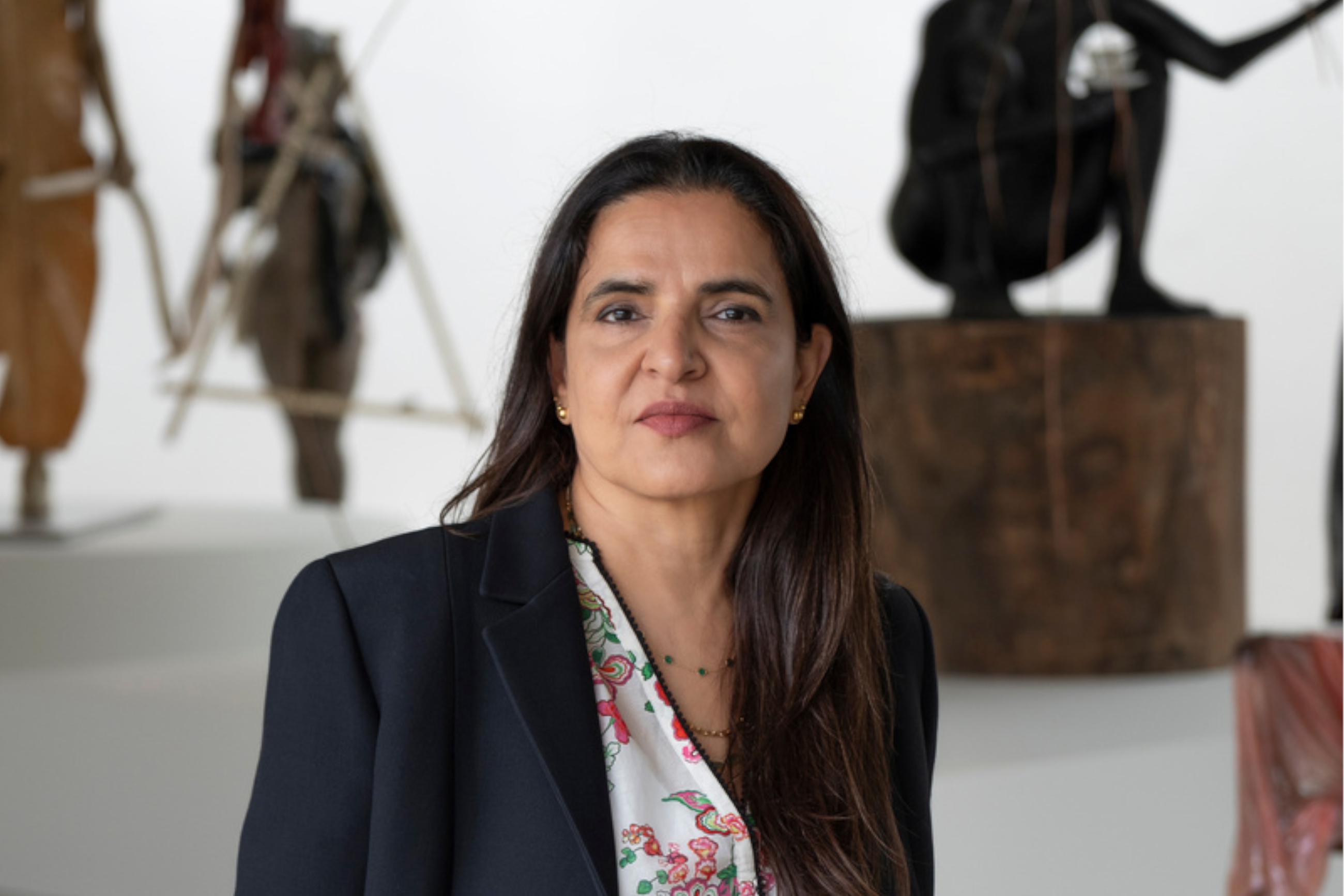
About the artist
Bharti Kher
Bharti Kher’s art gives form to quotidian life and its daily rituals, reassessing and transforming their meaning to yield an air of magical realism. Living between London and New Delhi, her use of found objects reflects her position between geographic and social milieus. Since 1995, she has used the bindi—a symbol linking the real and spiritual worlds—not as a motif but as a material with inherent narrative. Her sculptures often assemble mannequin casts, wooden wheels and architectural fragments in precarious, tension-filled compositions, challenging viewers’ relationships with objects and opening a dialogue between materiality and metaphysical reflection. Born in London in 1969, Bharti Kher lives and works between London and New Delhi.
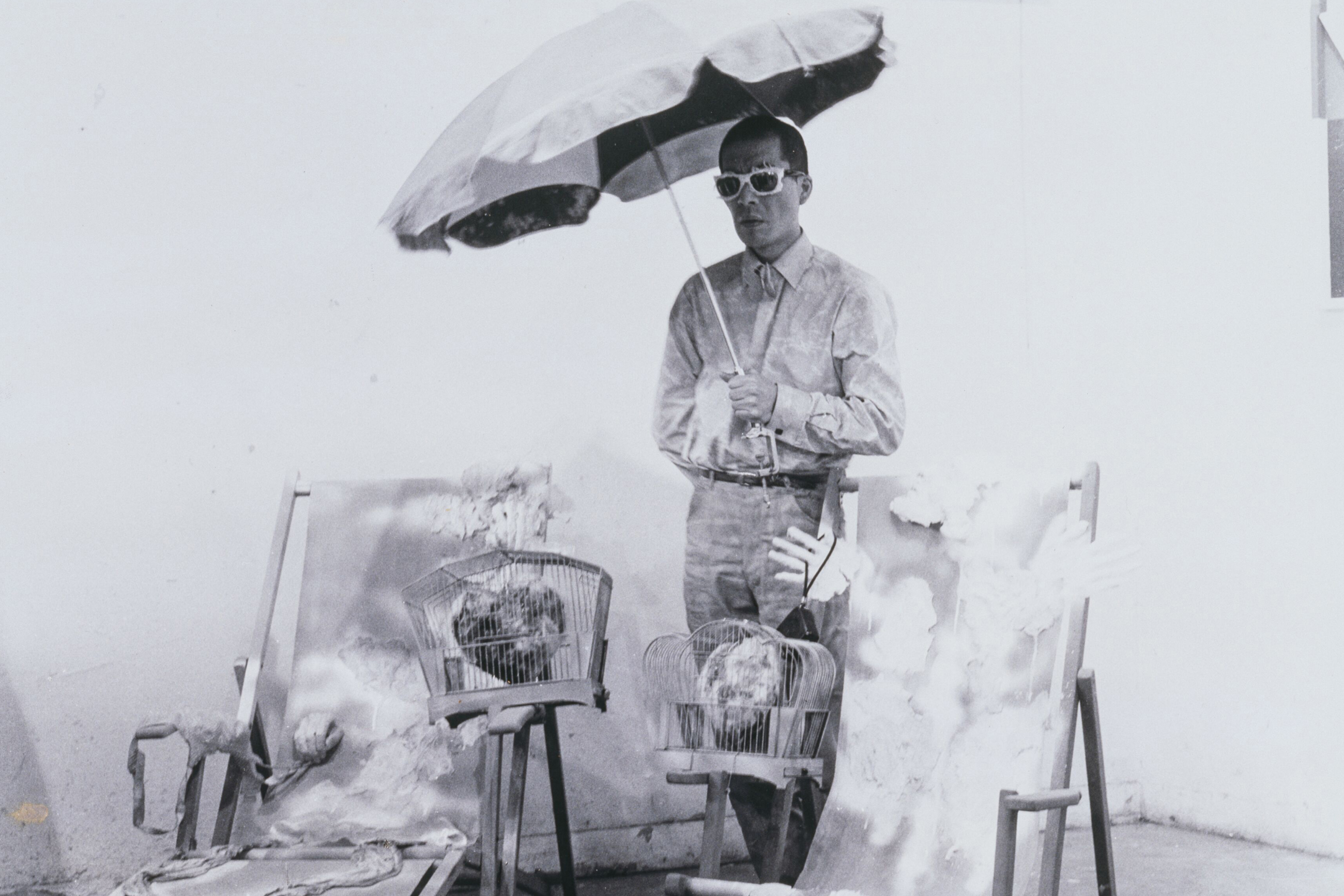
About the artist
Tetsumi Kudo
Tetsumi Kudo’s (1935 – 1990) four-decade practice explored mass consumption, technology, colonialism, racism and environmental decay through biomorphic sculptures and found-object assemblages. Active in Japan’s avant-garde and France’s Nouveau Réalisme, he critiqued political conformity and consumerism. After winning the 1962 Pan-Pacific prize, Kudo moved to Paris, creating works combining plastic dolls, circuitry and natural elements in 'New Ecology' compositions that blurred boundaries between technology, nature and humanity. His art reflects a transcultural view, drawing on Japanese tradition and Western modernism. Born in 1935 in Osaka, Kudo regularly returned to Japan from Paris in the 1980s to teach until his death in 1990.
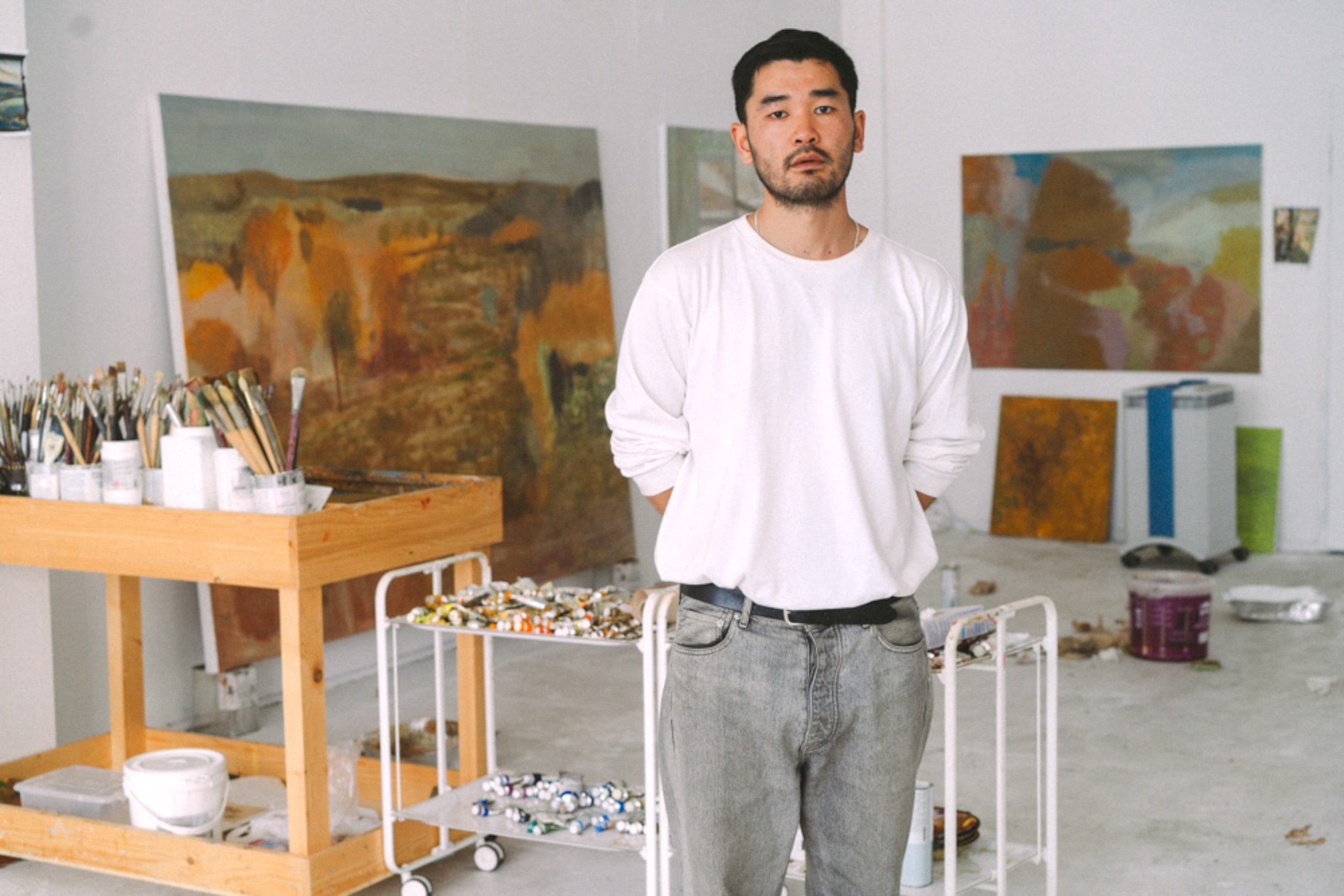
About the artist
Shota Nakamura
Shota Nakamura’s dreamlike imagery explores the boundaries between sleep, nature and domestic space. His paintings often depict figures in states of rest or meditation amid lush, intimate environments that blend indoor and wild garden elements. Nakamura’s layered oil technique creates poetic, immersive scenes that evoke calmness, emotional depth and a sense of introspection. Influenced by European modernists, he emphasizes intuitive expression, using color and line to convey mood and inner states. His work reflects a delicate observation of human emotion intertwined with the natural world. Born in 1987 in Yamanashi, Nakamura lives and works in Berlin.
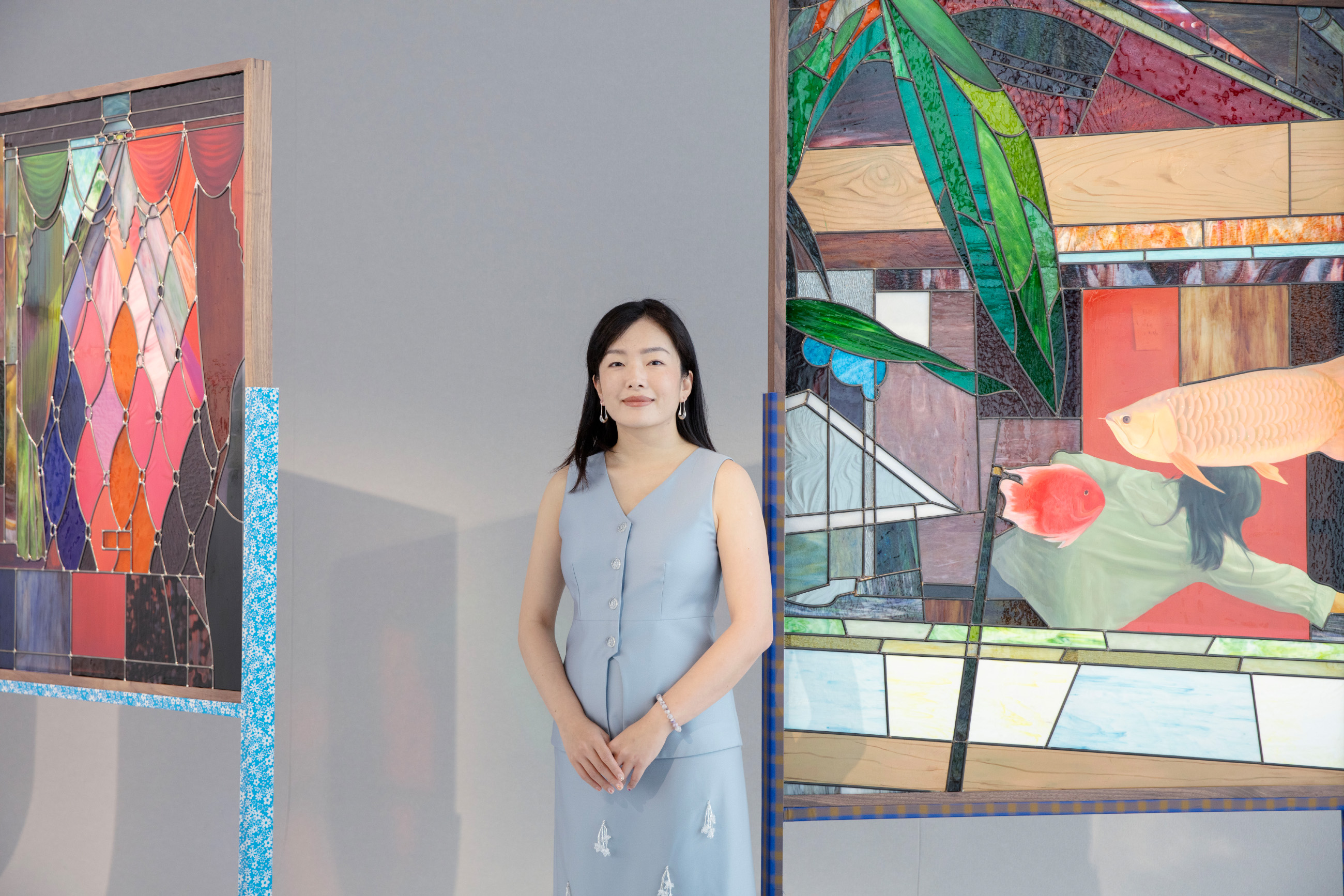
About the artist
Peng Ke
Peng Ke both works with images and writes, her experimental practice wandering between images from photography books and personal experiences from reality. Peng explores the experience of living in the fast-developing urban environment, such as small cities in China. One can peek into the colorful corners of these rural cities through the finely tuned images captured by Ke’s lens. Peng's primary concern is with the relationship between the human condition of urban spaces and the collective experiences of the people there. In her photographs, the tasteful colors, charming forms, strange outlines and varied textures of the indoor and outdoor daily scenes of China, among other places in Asia, are vividly and incisively displayed in their very original forms. Born in 1992 in Changsha, Peng lives and works between Los Angeles and Shanghai.
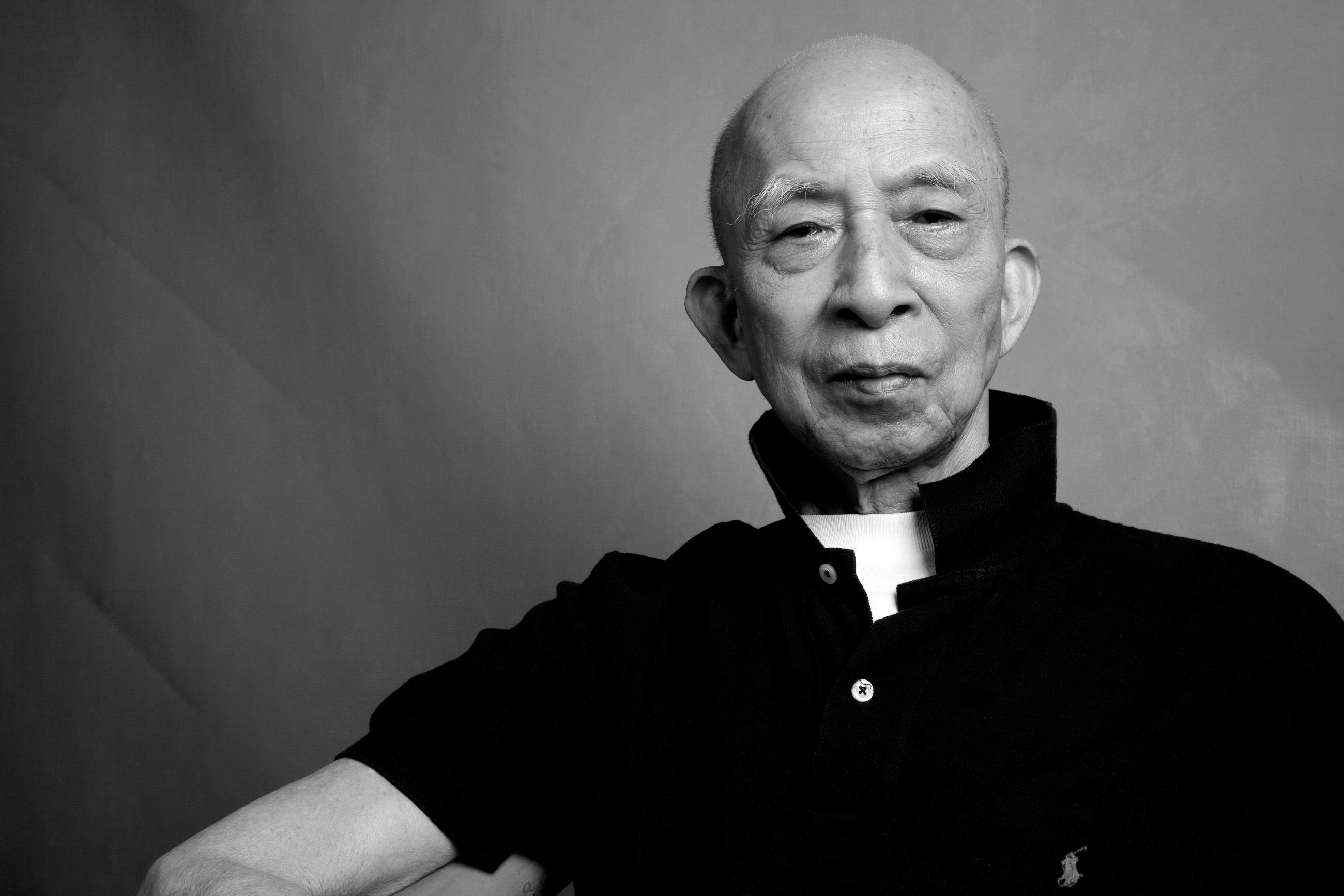
About the artist
Yeh Shih-Chiang
Yeh Shih-Chiang’s (1926 – 2012) practice reflects a life shaped by displacement, Zen devotion and resistance to institutional structures. Trained under Gao Jianfu at the Guangzhou College of Art in China, Yeh’s practice was rooted in the modern revitalization of ink painting. In 1948, he and his peers set off on a walking journey to Dunhuang but were rerouted to Taiwan due to civil war. Unlike others, Yeh stayed, withdrawing from official art circles and becoming increasingly reclusive. He devoted his life to painting and craftsmanship, living an ascetic life informed by literati and Zen ideals. In the 1970s, he began crafting guqin instruments and entered a new creative phase, marked by a spontaneous fluidity of line and visionary purity of form. Although uninvolved in local modern movements, he developed an individual artistic voice that earned him reverence among Taiwanese collectors and artists. Born in 1926 in Guangdong, Yeh lived in Taiwan until his passing in 2012.
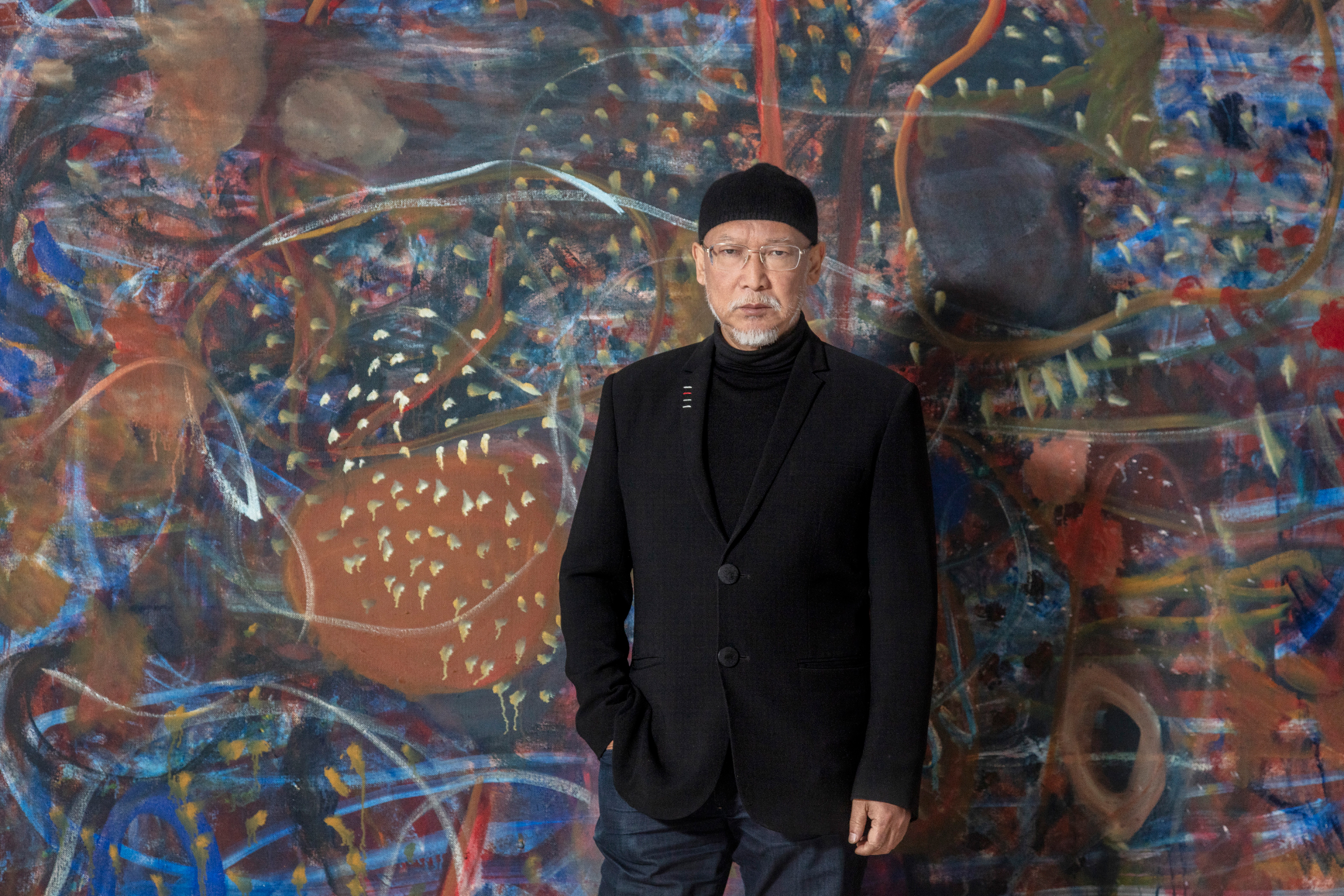
About the artist
Zhang Enli
Zhang Enli uses the outside world as a mirror to document the prosaic aspects of daily life, employing everyday objects like string or marble balls. He often magnifies these subjects, capturing fragments as if through a camera lens. His figurative works distort perspective to emphasize form and meaning, combining expressive brushwork influenced by traditional Chinese painting with pencil-drawn grids. In his immersive Space Paintings, Zhang paints directly onto walls, creating environments that range from abstract to figurative. His recent works, anchored in figuration, aim to capture the essence of his subjects, fusing memory, emotion and imagination. Born in 1965 in Jilin, Zhang lives and works in Shanghai.
Related Content
Current Exhibitions
1 / 11
